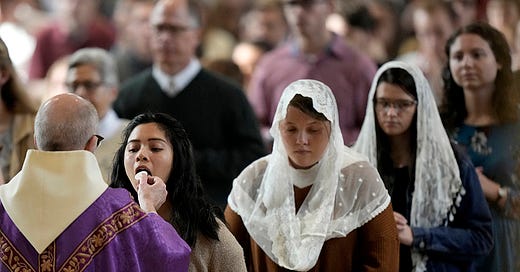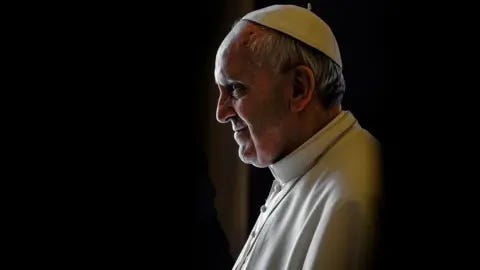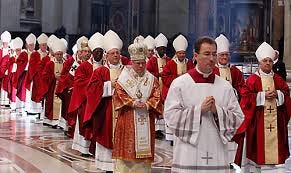Pope Francis and the American Catholic Church
Why the Occasional Tension between Francis and the American Church?
The recent passing of Pope Francis prompts both reflection and prayerful consideration of his legacy. His pontificate, marked by visibly expressed personal humility, pastoral sensitivity, and a novel charisma, undeniably left an enduring impact on global Catholicism. Yet, within the United States, Francis’s relationship with the American Catholic Church remained complex, often characterized by mutual confusion rather than clear communion. While deeply loved and genuinely prayed for by American Catholics, the late pope frequently appeared to misunderstand the realities, aspirations, and distinctive spiritual ethos of the Church in America— I want to help ease some of the division we are seeing in rhetoric today by showing that this misunderstanding was rooted fundamentally in the vastly different contexts of American and Argentine Catholicism. I can’t argue for his intention, nor do I even attempt to. Rather, I want to remain objective to facts here.
To begin with, Francis’s Argentinian context deeply influenced his perception of the Church. As Jorge Mario Bergoglio, he shepherded a flock living amid economic disparity, political instability, and social upheaval. Catholicism in Latin America, and Argentina specifically, has historically emphasized social justice as an immediate and practical response to poverty and injustice. Liberation theology, though not entirely embraced by Bergoglio, colored his pastoral outlook. Francis himself noted: “My people are poor and I am one of them. The poor have much to teach us, not just socially, but spiritually” (Bergoglio, 2012).
This perspective formed the bedrock of his pontificate, foregrounding mercy, poverty alleviation, and pastoral outreach as central themes. By contrast, the American Church, operating in a context of relative economic affluence, stable democratic republican structures, and a society culturally shaped by largely Protestant ideals, naturally developed different emphases—such as religious liberty, robust intellectual formation, and a distinct emphasis on tradition and orthodoxy and fidelity to the magisterium.
Indeed, this American emphasis on revealed doctrine and moral clarity often found itself at odds with Francis’s overt and sometimes confusing pastoral openness and informal communication style. For example, the American Church’s vigorous pro-life advocacy, defense of religious liberty, and rigorous catechetical formation created a Church uniquely primed for intellectual and moral combat against secular relativism. Bishop Robert Barron aptly described this intellectual and spiritual combativeness as “a Church engaged deeply in a struggle for its soul amid a radically secularized society, demanding clarity and orthodoxy as essential tools in its evangelization” (Barron 2011, 68).
Pope Francis, conversely, often appeared wary of what he perceived as a “rigid traditionalism,” a stance stemming from his South American experience where doctrinal rigidity sometimes hindered pastoral sensitivity. In his apostolic exhortation Evangelii Gaudium, he warned explicitly about rigidity in traditional practice: “There are Christians whose lives seem like Lent without Easter… I realize of course that joy is not expressed the same way at all times in life, especially at moments of great difficulty. But this rigidity can be damaging” (Francis, Evangelii Gaudium, no. 6).
Such statements, well-intentioned within his pastoral framework, nonetheless created confusion among traditionalist American Catholics, who viewed adherence to doctrine not as rigidity but as fidelity to the perennial teachings of the Church of Christ. Here, cultural misunderstanding was painfully evident.
Another critical point of divergence was Pope Francis’s approach to capitalism and economic structures. Rooted deeply in the experience of Argentina’s chronic economic instability, corruption, and class division, Francis was openly critical of market-driven economics, famously declaring in Evangelii Gaudium: “The economy of exclusion and inequality kills” (Francis, Evangelii Gaudium, no. 53).
However, American Catholics, shaped by a society where capitalism has largely enabled widespread prosperity and charitable outreach, often interpreted his critique as overly simplistic or unfairly dismissive of capitalism’s role in alleviating poverty. Prominent Catholic thinker George Weigel commented on this tension, noting: “Francis’s experience of capitalism in Argentina is simply not the capitalism experienced by most Americans, where it has been an engine of unprecedented material and social uplift” (Weigel 2019, 244).
Moreover, Francis’s pastoral preference for open ended dialogue and accompaniment sometimes conflicted with American expectations of moral and doctrinal clarity, particularly regarding contested issues such as marriage, sexuality, and gender. Where the American Church has been growing in its cry for reinforcement and clarity of doctrine, which the world received in tremendous wealth from John Paul II and Benedict XVI, Francis’s off the cuff pastoral language, influenced by the complexities of South American challenges, often appeared ambiguous or even unsettling. Ross Douthat, writing about this tension, summarized: “The Pope’s instinct for mercy sometimes left American Catholics yearning for clarity amid moral chaos” (Douthat 2023).
Yet, despite such misunderstandings and tensions, it is crucial to recognize that American Catholics consistently demonstrated an enduring love and respect for their pontiff. Even amid doctrinal disagreements and pastoral miscommunications, Francis was deeply cherished and loved as the Successor of Peter, and his passing drew forth a universal outpouring of prayers and affection. Not a single person within the American Catholic Church would deny the unanimous call of prayer for the eternal repose and divine happiness of his soul. Archbishop José Gomez of Los Angeles reflected poignantly on this unity amid diversity: “Whatever differences there might have been, Pope Francis was always embraced warmly by Catholics in the United States. He was our Holy Father, loved and respected, prayed for continually” (Gomez 2025).
This affection, evident in dioceses across America, underlines a profoundly Catholic paradox—the capacity to hold tension between love and disagreement. As Francis himself famously remarked in Amoris Laetitia: “Unity of teaching and practice is certainly necessary in the Church, but this does not preclude various ways of interpreting some aspects of that teaching or drawing certain consequences from it” (Francis, Amoris Laetitia, no. 3).
In assessing this complex relationship, it is vital to recognize the growth and renewal occurring within American Catholicism during Francis’s papacy. Significantly, this renewal has been driven in large part by traditional communities—young Catholics who, paradoxically, found strength precisely in their doctrinal clarity, spiritual rigor, and liturgical reverence. This should come as no surprise. Amidst a continually fraying sociopolitical fabric, more and more young Americans are finding that the perennial stability of the teachings of the bride of Christ is the only safe haven God and human history have ever provided. Hence, despite Francis’s occasional critique of this trend—expressed vividly in his 2021 motu proprio Traditionis Custodes, restricting the traditional Latin Mass—traditional communities in America continued growing and continued loving him. Cardinal Raymond Burke articulated: “The traditional movement in the American Church is a genuine, powerful source of evangelization and renewal. It is neither rigid nor closed; it is vibrant and youthful” (Burke 2021).
Yet the American Church remained consistently respectful and devoted, recognizing in Francis not merely an ordained prelate, but the Vicar of Christ. At the news of his passing, American Catholics of all stripes universally echoed Cardinal Timothy Dolan’s words: “Our hearts are heavy, but our spirits are resolute in prayer for Pope Francis’s soul. He was our shepherd, and we loved him deeply, even when we struggled to understand each other” (Dolan 2025).
Ultimately, if I am to lend him the utmost charity, Pope Francis’s misunderstanding of American Catholicism is less a failing of his pastoral vision and more an inevitable natural consequence of contrasting cultural contexts. His Argentinian experiences shaped a pontificate distinctly pastoral, often to even the blurring of the lines of doctrine, and this was misaligned with American expectations shaped by different historical and cultural realities in deperate need of precisely that clarity and stability. Nevertheless, his papacy gave some gifts to the global Church, and American Catholics consistently reciprocated with prayerful love, genuine reverence, and a mature ecclesial attitude.
As we commend Pope Francis to God, Archbishop Gomez eloquently captures this moment of mourning and hope: “In prayer for Pope Francis, let us remember the unity we share, not despite our differences, but because Christ Himself prayed that we might be one” (Gomez 2025).
May his soul rest in the peace of Christ, and may our Church grow ever stronger in unity, understanding, and grace.
Jorge Mario Bergoglio, Interview with La Nación, 2012.
Robert Barron, Catholicism: A Journey to the Heart of the Faith (Image Books, 2011), 68.
Pope Francis, Evangelii Gaudium (2013)
George Weigel, The Irony of Modern Catholic History (Basic Books, 2019)
Ross Douthat, “Pope Francis’s Decade of Mercy and Confusion,” New York Times, March 2023.
José Gomez, “Statement on the Passing of Pope Francis,” Archdiocese of Los Angeles, April 2025.
Pope Francis, Amoris Laetitia (2016)
Raymond Burke, Interview with The Catholic World Report, August 2021
Timothy Dolan, “Statement on the Death of Pope Francis,” Archdiocese of New York, April 2025
José Gomez, “Statement on the Passing of Pope Francis,” Archdiocese of Los Angeles, April 2025








